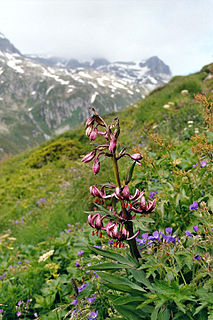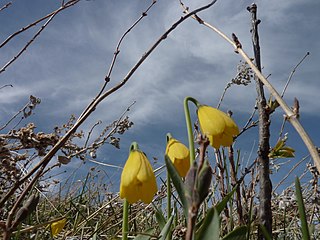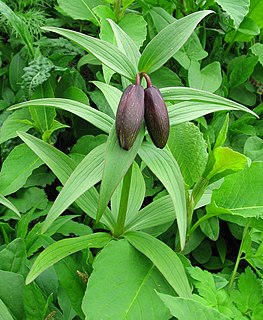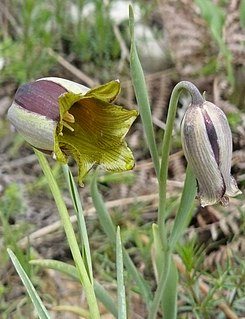Chocolate lily refers to any of a number of flowering plant species:

The flowering plants, also known as angiosperms, Angiospermae or Magnoliophyta, are the most diverse group of land plants, with 64 orders, 416 families, approximately 13,164 known genera and c. 369,000 known species. Like gymnosperms, angiosperms are seed-producing plants. However, they are distinguished from gymnosperms by characteristics including flowers, endosperm within the seeds, and the production of fruits that contain the seeds. Etymologically, angiosperm means a plant that produces seeds within an enclosure; in other words, a fruiting plant. The term comes from the Greek words angeion and sperma ("seed").
In biology, a species ( ) is the basic unit of classification and a taxonomic rank of an organism, as well as a unit of biodiversity. A species is often defined as the largest group of organisms in which any two individuals of the appropriate sexes or mating types can produce fertile offspring, typically by sexual reproduction. Other ways of defining species include their karyotype, DNA sequence, morphology, behaviour or ecological niche. In addition, paleontologists use the concept of the chronospecies since fossil reproduction cannot be examined. While these definitions may seem adequate, when looked at more closely they represent problematic species concepts. For example, the boundaries between closely related species become unclear with hybridisation, in a species complex of hundreds of similar microspecies, and in a ring species. Also, among organisms that reproduce only asexually, the concept of a reproductive species breaks down, and each clone is potentially a microspecies.
- Dichopogon strictus (syn. Arthropodium strictum), whose flowers smell of chocolate
- Fritillaria affinis , also called rice-root or checker lily, from western North America
- Fritillaria biflora , with chocolate-brown flowers, in California
- Fritillaria camschatcensis (Kamchatka fritillary), with chocolate-brown flowers, in Alaska

Dichopogon strictus, commonly known as chocolate lily, is a herbaceous perennial plant species native to Australia.

Fritillaria affinis is a highly variable species in the genus Fritillaria, native to western North America, in California, Klamath Ranges, the north coast ranges, Cascade Ranges, north Sierra Nevada foothills, and the San Francisco Bay Area, north to British Columbia, Oregon, Washington, Montana and Idaho.
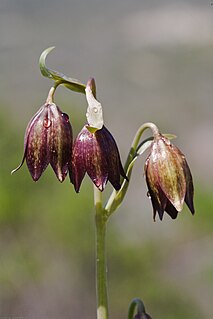
Fritillaria biflora is a species of fritillary native to western California and northern Baja California. It occurs in the chaparral and woodlands ecoregion, often in serpentine soil formations and hillside grassland habitats.
| This page is an index of articles on plant species (or higher taxonomic groups) with the same common name (vernacular name). If an internal link led you here, you may wish to edit the linking article so that it links directly to the intended article. |

